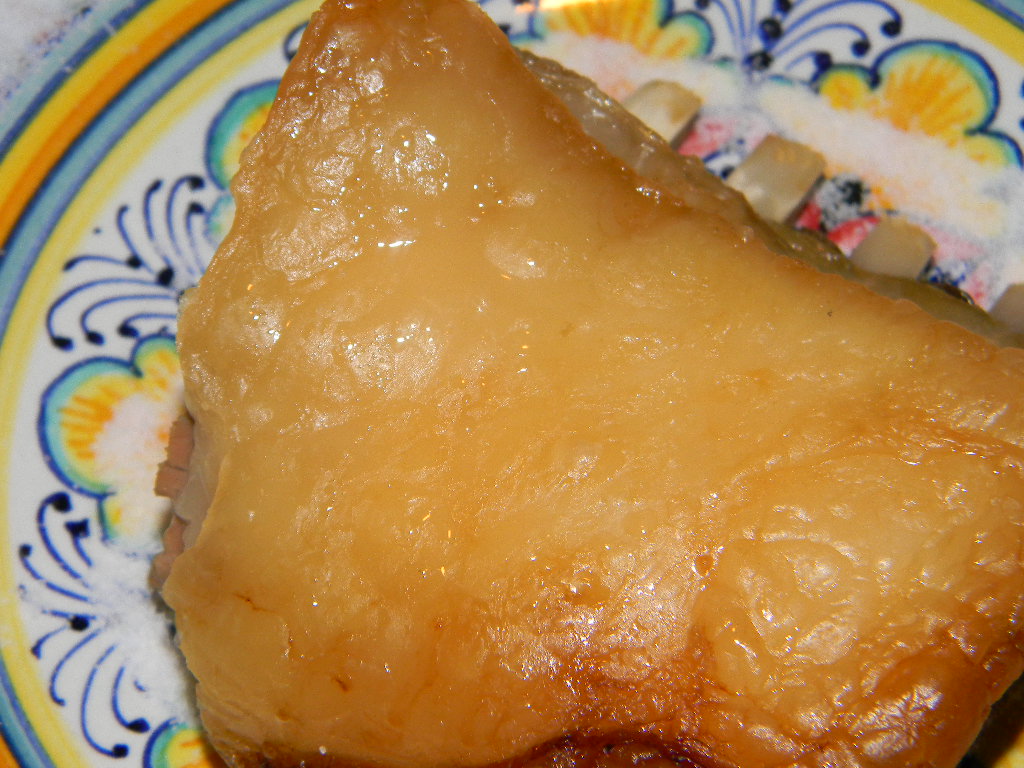I notice that various different fats affect my sensitive gut in different ways, so I thought I should spend some time researching why that is.
I've noticed that all plant oils disagree with me. Even olive oil and coconut oil, which are everyone's darlings!
I came across this pdf which shows some nice charts of the fatty acid profile of various fats:
https://www.uccs.edu/Documents/danderso/fats_oils.pdf
Here is a more in-depth profile of beef, pork and poultry fats:
http://cyberlipid.gerli.com/description/simple-lipids/triacylglycerols/animal-fats/
And here:
http://cyberlipid.gerli.com/description/simple-lipids/triacylglycerols/animal-fats/land-animals/
What I have noticed in my own case, is that higher omega 6 fats make me feel nauseated and cause diarrhea. Poultry, eggs and pork are higher in omega 6 fats (as well as some vegetable oils). What the poultry and hogs are fed does make some difference in their fatty acid profile, however, and their breed does too.
For example, the Mangalitsa breed of hog (that the Paleomedicina clinic in Hungary uses in their therapy) has a better omega 6:3 ratio than other kinds of pork:
https://www.researchgate.net/figure/Comparison-of-the-least-squares-means-SEM-for-the-fatty-acids-composition-of-MLLT_tbl1_282731369
However, when studying that data, even best omega 6:3 ratio for Mangalitsa pork (the swallow-belly breed) is still 14:1, which is far higher than the 4:1 that researchers have found seems to be ideal for lowering all-cause mortality:
https://www.ncbi.nlm.nih.gov/pubmed/12442909/
Truly wild boar can possibly have a much better omega 6:3 ratio than even the best Mangalitsa, so that is something to consider, although this one seems to be so low to be an anomaly:
http://ipcbee.com/vol53/014-ICNFS2013-F1018.pdf
I have found that most wild boar seems to show a higher omega 6:3 ratio, more like an average of 11:1, which is still
very high:
https://www.researchgate.net/publication/329618295_Seasonal_variation_in_fatty_acid_composition_of_wild_boar_in_Lithuania
I had purchased some acorn-fed Iberico pork, thinking it would be healthier, but it bothered my gut. Which makes sense to me now, since feeding them nuts (acorns) would make their fat higher in omega 6s.
If it were possible to find 100% forage-fed poultry, (which seems impossible to find in the USA), then it would also be closer to that ideal omega 6:3 ratio. Pastured poultry is generally far, far better omega 6:3 ratios than non-pastured, ranging from 8:1 down to just 2.4:1:
https://www.ncbi.nlm.nih.gov/pubmed/12442909/
I wonder if that's why sometimes when I eat poultry I get ill, but sometimes I don't. Maybe it depends on how/what they were fed, and their corresponding omega 6:3 ratio.
I also think that omega 9s maybe do not agree with me as much, and poultry is higher in omega 9s than beef or lamb. Acorn-fed Iberico pork, and olive oil, are also high in omega 9s, and do not sit well with my gut either, interestingly.
http://cyberlipid.gerli.com/description/simple-lipids/triacylglycerols/animal-fats/land-animals/
"Chicken fat is characterized by a relatively high proportion (about 10%) of palmitoleic (16:1
n-9) and linoleic acid (18:2
n-6) (about 25%). Fatty liver of duck or goose is characterized by triglycerides rich in oleic acid [18:1
cis-9] (about 60%) and containing moderate amounts of palmitic and stearic acids (20 and 15%, respectively)."
So I think I need to steer clear of omega 6s (including 18:2n-6) and omega 9s (including 18:1cis9) as much as possible, since they really just do not agree with me (not sure why). This would explain why pretty much all vegetable oils do not sit well with me, since they are usually high in one or the other of these. I think that capric acid (C10:0), lauric aid (C12:0) and myristic acid (C14:0) also do not sit well with me.
Bone marrow fat and intramuscular ruminant meat fat does sit very well with me. They are made up of stearic acid (C18:0), vaccenic acid (18:1cis11), arachidic acid (C20:0), ALA (C18:3, an omega-3 fatty acid) and arachidonic acid.
"As phospholipids are present, bone fats are more unsaturated than the other animal fats."
This may explain why bone fat seems so easily digestible to me.
On the other side of the scale, fats that are very highly saturated, like tallow, I find very waxy and unpalatable, and cause me some gut discomfort as well.
Interestingly, the area from which the fat comes in ruminant animals, can make a big difference in its fatty acid makeup:
"Its fatty acid composition depends on the tissue location more than on the food ingested."
So there are basically four locations for fat in a ruminant: intramuscular fat (marbling), the most easily digestible fat in my opinion;
intermuscular fat ("seam" fat), often cordoned off by silverskin and so not as digestible; subcutaneous fat (right under the skin, tends to be more "greasy" to me); and visceral fat (surrounding the organs, tends to be more "waxy" to me). These seem to go in the order of digestibility, in my opinion.
The fats are put on an animal in the opposite order:
https://meatscience.org/TheMeatWeEat/topics/article/2017/09/07/fatinmeat
Visceral first, then subcutaneous, then intermuscular, then lastly intramuscular. So very young animals such as veal do not have much intramuscular fat, if any. The exception is lamb, because lamb as well as sheep are a fattier animal in general than all other ruminants.
So a fat is not just a fat, it seems! There's a lot more to it! And this is just scratching the surface. But in general, grassfed ruminant intramuscular and bone fat seem to be the most highly digestible and nutritious.
Edited to Add: I wanted to add another research article that I found. Table 2 shows a nice chart of the differences in omega 6:3 ratio and vitamin A content between grass fed and grain fed beef. Pretty significant!
https://www.ncbi.nlm.nih.gov/pmc/articles/PMC2846864/
I also wanted to mention that when I was eating pork and/or eggs, even though they were local, pasture-raised, my triglycerides were very high and my HDL was just in the "low-decent" range. But when I gave up pork and eggs, my triglycerides went down to the 80s (great!) and my HDL went
up to the 80s (fabulous)! My CRP went from the high range down to below 1, as well. This shows me that these high omega-6 foods are pretty inflammatory!
##

Comments
Post a Comment